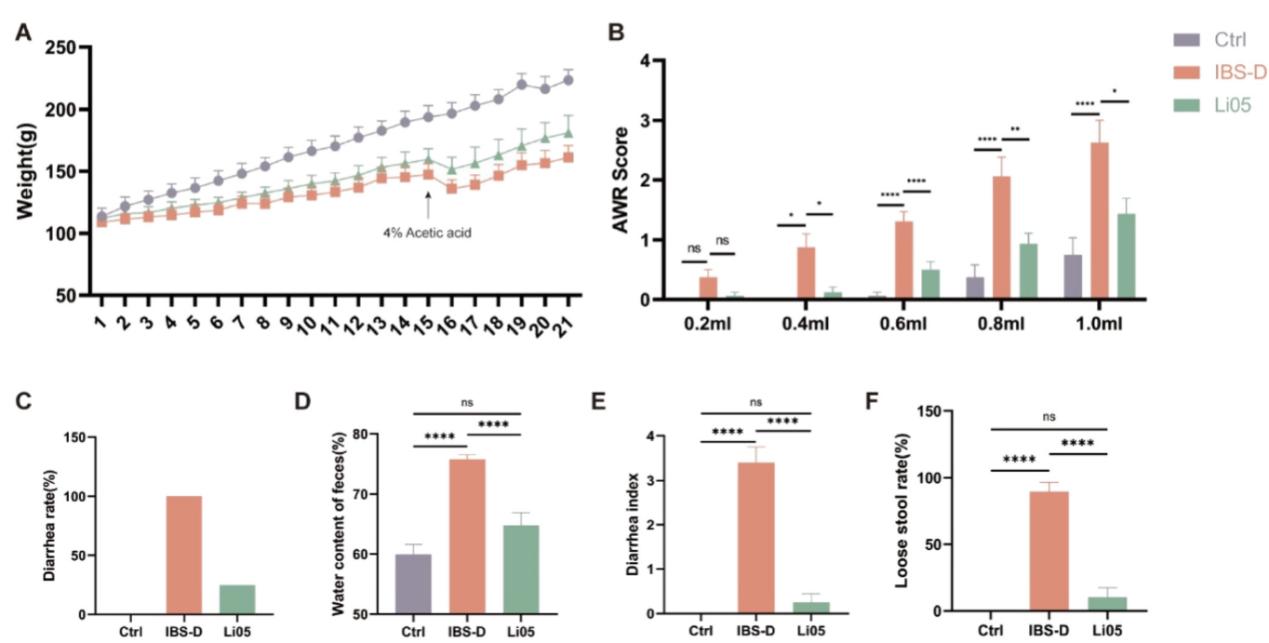Acetic Acid and Wrap Restraint Stress-Induced Irritable Bowel Syndrome (IBS) Model
Affecting 7%–21% of the general population, irritable bowel syndrome (IBS) is a prevalent functional gastrointestinal disorder characterized by recurrent abdominal pain, spasms, and bloating, accompanied by changes in bowel habits. Creative Bioarray, a leading CRO partner, provides the acetic acid and wrap restraint stress-induced irritable bowel syndrome (IBS) model for our clients to evaluate the efficacy of drug candidates and study the associated pathological mechanisms.
The first restraint stress model was proposed by Williams, who constrained upper body of rat for 24 h. This model showed an inhibition of intestinal transport and an increased number of defecation without formation of ulcers. It has been considered as a classic IBS model. However, with the advancement of scientific research, improved restraint stress models are now widely used. At Creative Bioarray, we offer the acetic acid and wrap restraint stress-induced irritable bowel syndrome (IBS) model to our clients as an effective tool for IBS research.
Our Acetic Acid and Wrap Restraint Stress-Induced Irritable Bowel Syndrome (IBS) Model
- Available Animal
Rat - Modeling Method
Step 1: After anesthetizing with ether, rats are intracolonically instilled with acetic acid.
Step 2: After acetic acid treatment, rats are subjected to WRS by being placed in a new rat restraint cage. In the cage, their limbs can not move, their body can not turn around, but they can breathe and defecate normally - Group Setting
- Control group
- Model group
- Three dose groups of test compounds
- Endpoints
- H&E staining: colon
- Body weight
- Fecal count
- Fecal water content
- AWR score
- Behavioral tests: open field test
- Gastric emptying test
- Intestinal propulsion
- Cytokine analysis
- Serum analysis: corticosterone, 5-HT, etc.
- Other customized endpoints: available upon request.
Example Data
 Fig. 1 Pediococcus pentosaceus Li05 (Li05) improves weight loss, visceral sensitivity, and diarrhea in IBS-D rats. (A) Changes in the body weight of each group. (B) Abdominal withdrawal reflex (AWR) scores under different pressures. (C) Diarrhea rate in each group. (D) Fecal water content in each group. (E) Diarrhea index in each group. (F) Loose stool rate in each group.
Fig. 1 Pediococcus pentosaceus Li05 (Li05) improves weight loss, visceral sensitivity, and diarrhea in IBS-D rats. (A) Changes in the body weight of each group. (B) Abdominal withdrawal reflex (AWR) scores under different pressures. (C) Diarrhea rate in each group. (D) Fecal water content in each group. (E) Diarrhea index in each group. (F) Loose stool rate in each group.
 Fig. 2 Histopathological images of colonic tissues in each group of rats stained with H&E. The red arrows indicate areas of inflammatory cell infiltration (scale bar, 100 μm)
Fig. 2 Histopathological images of colonic tissues in each group of rats stained with H&E. The red arrows indicate areas of inflammatory cell infiltration (scale bar, 100 μm)
In addition, we also provide another irritable bowel syndrome (IBS) model that may be you are interested in:
Quotation and Ordering
Creative Bioarray has extensive experience in developing disease models that are tailored to your specific needs. Our team of experts is dedicated to providing you with the most reliable and efficient solutions possible. If you are interested in our services, please feel free to contact us at any time or submit an inquiry to us directly. We'd be happy to help you with all your research needs.
Reference
- Wu, Y., et al. Protective effect of Pediococcus pentosaceus Li05 on diarrhea-predominant irritable bowel syndrome in rats. Food & Function, 2024.